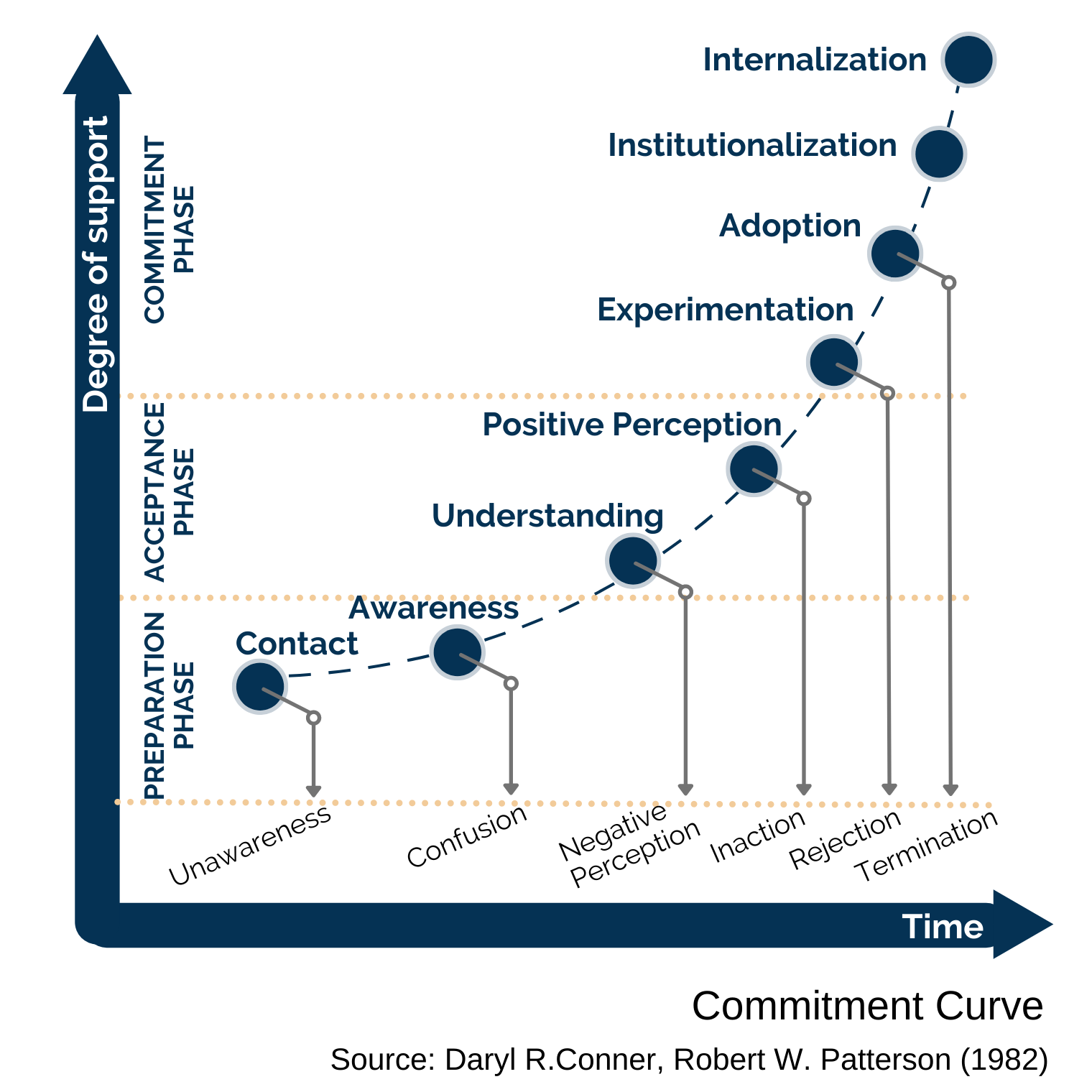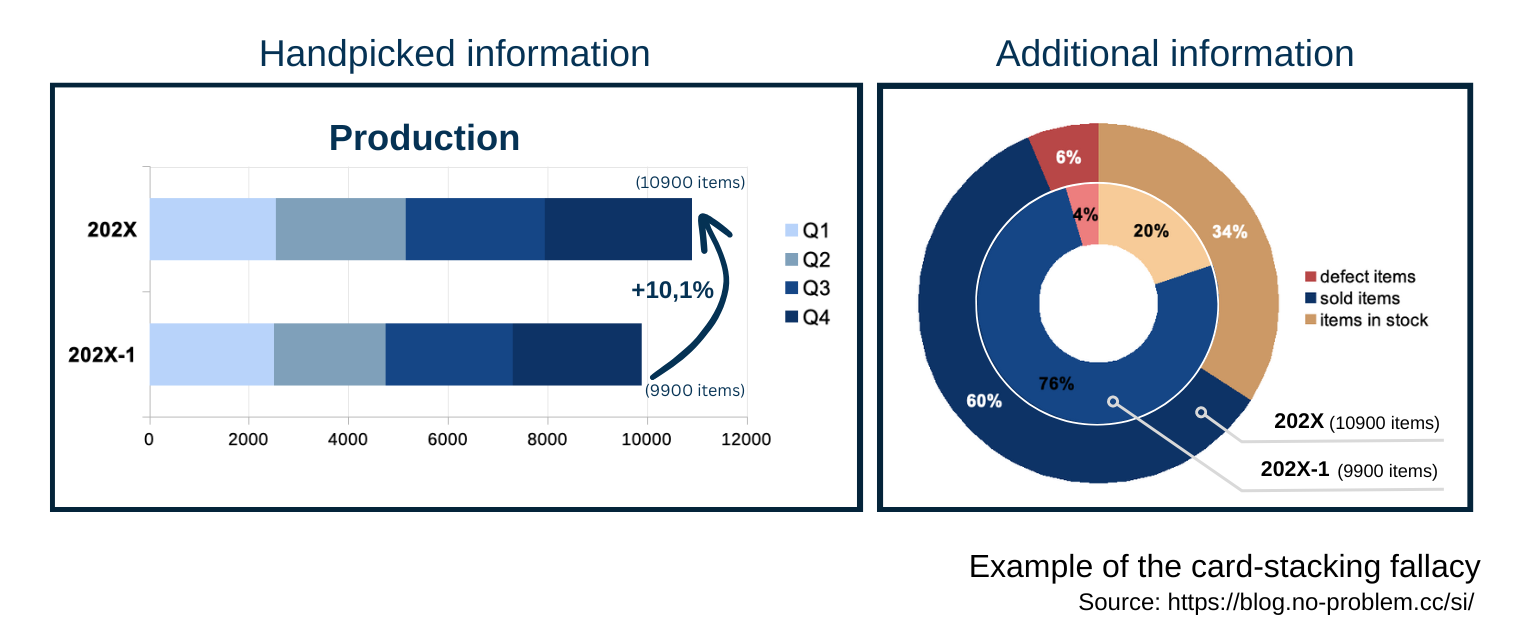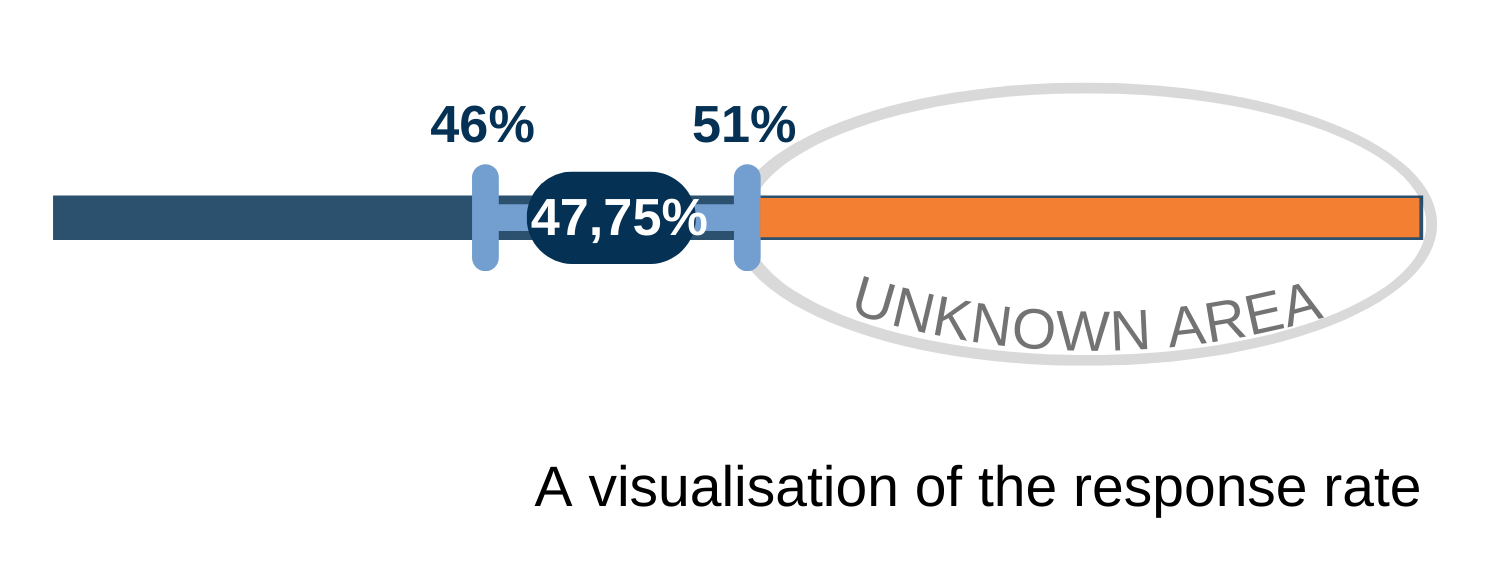22 Common Errors in Reasoning
Efficient communication is a cornerstone of any successful project, and arguments and debates are an important part of it. Each good communication should have a call to action. In order to achieve it, the affected groups of people must experience all the stages of the commitment curve: preparation (contact, awareness), acceptance (understanding, positive perception), and commitment.
 Logic is a powerful tool for persuading an audience by providing valid argumentation and reasonable statements in the course of the communication process. However, not every argument or statement is solid. Some might have errors in reasoning and rhetoric and lead to incorrect conclusions. These are so-called “logical fallacies”. They indicate either illegitimate arguments or irrelevant points, and often can be identified because they lack evidence that supports their statement. They can be used intentionally to manipulate or trick an audience or can be made unwittingly by mistake. Fallacies have a lot of variations and may be present in all forms of human communication. Often they are classified by errors in the structure (a formal fallacy), and errors in the form, content, or context of the argument (an informal fallacy).
Logic is a powerful tool for persuading an audience by providing valid argumentation and reasonable statements in the course of the communication process. However, not every argument or statement is solid. Some might have errors in reasoning and rhetoric and lead to incorrect conclusions. These are so-called “logical fallacies”. They indicate either illegitimate arguments or irrelevant points, and often can be identified because they lack evidence that supports their statement. They can be used intentionally to manipulate or trick an audience or can be made unwittingly by mistake. Fallacies have a lot of variations and may be present in all forms of human communication. Often they are classified by errors in the structure (a formal fallacy), and errors in the form, content, or context of the argument (an informal fallacy).
“Does not follow” (non sequitur)
All formal fallacies are associated with non sequitur error types where reasoning goes wrong, i.e. a presented conclusion is not necessarily a logical result of the given facts. Reaching logical conclusions depends on the proper analysis of statements taken to be true and used as a basis for reasoning, so-called premises. In order to work, logic requires decisive statements based on reliable and complete facts accepted by the audience. It also leans on which factors are recognized and ignored by the premises. Therefore, premises that are correct but ignore other essential information might drive misleading conclusions. Some examples of formal fallacies are:
- In 2020 the average market salary of IT specialists has noticeably increased, therefore the qualification of IT staff hired in that year must be very high.
- Developers wear comfortable hoodies and jeans. Peter comes to the first interview in a business suit, therefore he is not a developer.
- Some high performers have the potential for further development and belong to a company’s top talent group. After a performance review, Marie was evaluated as a high performer, therefore, she is a top talent.
The landscape of informal fallacies has a vast variety and can be categorized in different ways. Among others, it might be a lack of relevance, present improper presumptions, faulty generalizations, and errors in assigning causation. Some of these fallacies are known since the first public speeches in Ancient times, others have appeared and bloomed together with the development of advertising, marketing, political technologies, social media, and the business environment. Sitting in a business meeting, surfing the Internet, or going to a shopping mall, we can observe plenty of logically unsound premises and based on them false conclusions, like:
Appeal to authority (argumentum ad auctoritate)
It is a misusage of an authority’s opinion. A statement made by an authority on some topic is used as evidence to support one’s argument disregarding circumstances such as the reliability and relevance of the information to the issue, the existence of a widespread agreement among authorities, or alternative opinions on the topic.
- To be competitive, our company has to speed up the implementation of modern technologies and agile approaches. Jeff Sutherland states that the SCRUM framework can be used in any business, therefore we must apply this method to all our construction projects.
Appeal to emotions
It is a set of fallacies provoking emotions (fear, flattery, pity, ridicule, etc.) to win a statement or a debate. These fallacies attempt to pull on an audience’s emotions, manipulate, and distract listeners instead of using valid reasoning to obtain an agreement. For instance, the appeal to pity (argumentum ad misericordiam) aims to generate feelings of sympathy or mercy, or the appeal to ridicule (reductio ad ridiculum, ad absurdum) is a diversion from the merits of the opponent’s arguments by mocking or stating that an opponent’s position is laughable or absurd.
- During annual performance reviews, such a speech of a line manager excusing the underperformance of an employee is not a rare case: “Lora is a nice young lady. This year was very difficult for her: she lost her grandmother and has permanent problems with her boyfriend. That is why she is sometimes rude to clients, quarrels with colleagues, and has missed several important deadlines. If we assign her to the ‘need improvements’ category, it will be an additional stress for her.”
Appeal to hypocrisy/ “you too” (tu quoque)
This fallacy deflects criticism away from oneself by accusing the other person of the same problem or something comparable.
- You are not in a position to criticize the retention methods of my department while the fluctuation rate of your department is also higher than the targeted one.
Appeal to ignorance (argumentum ad ignorantiam)
It is based on the speculation that a proposition must be true because it has not been proven false or vice versa. The fallacy allows shifting the need for proof of a statement away from the person making a statement.
- We have no evidence that this risk has ever been realized in our projects, so it has to be excluded from risk analysis.
Bandwagon appeal/ Argument to people (argumentum ad populum)
It assumes that something is true or right because others think it is so. The fallacy is an attempt to influence one to think the same way as the multitude (most people or a group of people) does. It appeals to emotions and the feeling of togetherness rather than facts and evidence.
- A genuine patriot of our company always goes the extra mile and never complains about overtime.
Begging the Question (petitio principii)
A statement that should be validated is presented as truth and misled to assume something has been proved.
- Overwhelmed and ineffective modernization should be stopped.
Circular reasoning (circulus in probando)
It is a restatement of the same argument rather than actually proving it.
- Our manager is an excellent communicator because he speaks effectively.
Changing the subject/ Red herring
This is one of the common tactics that diverts attention from the main issue by introducing irrelevant points intended to replace the lack of real arguments or to replace implicitly the subject of the discussion.
- Our team lead wants to talk about my morning lateness, so I asked her what she is going to do with delays in customers’ payments.
Cherry-picking/ Card-stacking/ Fallacy of incomplete evidence
It happens by carefully selecting facts and evidences to confirm a particular position and skipping or ignoring data that may contradict this position.
- Presentation of achievements:

Genetic fallacy/ Fallacy of origins/ Fallacy of virtue
This fallacy assumes that information or arguments are validated based on their source of origin (a person, group, organizational unit, or institute) rather than their content. The focus shifts from ‘what’ and ‘why’ have been said to ‘who’ said it.
- The objections to the new target-setting process come only from the R&D department and can be ignored.
False cause (post hoc ergo propter hoc)
It happens when a conclusion is solely based on the order of events and other factors potentially responsible for the outcome are not considered. In other words, a temporal sequence implies causation: if ‘A’ occurred after ‘B’, then ‘B’ must have caused ‘A.
- We should not arrange an open-air company party because every time we do, heavy rain comes.
False comparison/ Faulty analogy/ Comparing apples and oranges
It assumes that if two things are similar in one or several aspects, they are necessarily identical in some others or all the rest facets. Often, a similarity might be based on ignorance of additional factors.
- This product development project has the same estimated duration as one of our infrastructure projects, therefore it requires a similar budget.
False compromise/ Argument to moderation/ Middle ground/ Fallacy of the golden mean (argumentum ad temperantiam)
It assumes that a compromise between two opposite positions is always correct.
- Subject matter experts estimate a project duration of one year, but the customer wants its completion in 4 months, therefore a sales manager has prepared a contract with an 8-month project duration without corrections in the project scope, output, and budget.
False dilemma/ False dichotomy/ Either – or/ Black or white
This fallacy reduces the options of a complex issue to two extremes: often one right, one wrong. This is a manipulative tool aimed to promote one side and exaggerate the negative effects of another.
- Internship students come to a company to work hard or to loaf.
- A company has either to invest in A, B, and C technologies to become the market leader or sell its business.
Hasty generalization/ Fallacy of insufficient sample
It happens when reasoning is based on insufficient or biased evidence. Often, this fallacy can be met in presentations of survey results when conclusions are derived from a small sample group that does not sufficiently represent an entire population.
- Despite good grades during his study, the intern does a lot of mistakes in working tasks. Therefore, our department won’t accept interns who graduated from this university anymore.

- The results of the pulse-check 202X show that in our company employees are very satisfied with their line managers. The average satisfaction value is 76,75.
Irrelevant conclusion/ Missing the point (ignoratio elenchi)
It happens when provided arguments may be valid, but do not address or relate to the issue in the discussed question.
- John is clearly an experienced manager. He has a warm family life and regularly takes part in volunteer projects.
Personal attack (ad hominem)
This is an attack on the character of a person rather than a debate about her opinions or arguments.
- It is a waste of time to discuss the claims of the procurement department about the project organization because they are all foolish quibblers.
Slippery slope
It supposes that if a certain event occurs, it will necessarily lead to a chain of small steps or future events ending in a predefined result. The starting point is equated to the outcome. In other words, if we do not want this result to occur, the initial event must be prevented.
- If psychometrics is not used in an assessment center (AC), AC results will not be valid. (Psychometrics is reliable and suitable for some situations instrument. However, the design of an assessment center is a complex task with multiple facets that affected its validity.)
Straw Man
This is an oversimplification of an opponent’s viewpoint and then attacks a different subject rather than the topic being discussed. The purpose of this misdirection is to make one’s position look stronger than it actually is.
- Division leads who don’t support a continuous increase of the company’s well-being budget hate our employees.
Sunk cost
This fallacy describes the tendency to follow through on an endeavor if time, effort, or money have been already invested into it, regardless of whether the additional costs outweigh the potential benefits.
- We have invested $ xxx into a HRM system, but it does not fit our internal processes and the results of its implementation are far away from the planned ones. The system provider offers customization, it will cost in the range of the initial investment or slightly more. Considering already spent money, time, and effort, it makes sense to customize the system.
Testimonial/ Anecdotal evidence
It happens when a statement is made only based on personal observation, collected in a casual manner. Intentionally this fallacy is used in advertising when a respected or well-known person promotes something in an area where they lack expert knowledge.
- A famous artist recommends a bank.
- The chief accountant recommends to the chief engineer how to set up a production line.
Spotting weak points in arguments is a gained habit. It can and should be trained to be applied in communication activities. It is helpful to notice mistakes in reasoning being in a receiver position to separate the grain from the chaff. And it is even more important to check your own messages on fallacies to avoid transmitting misleading information. Logical reasoning is one of the most powerful convincing methods, however, to strengthen communication efficiency it is worth addressing the values and emotions of people besides arguments. Therefore, experienced influencers are using a diverse spectrum of instruments and methods to work with and persuade their audience.
Read this article on LinkedIn

